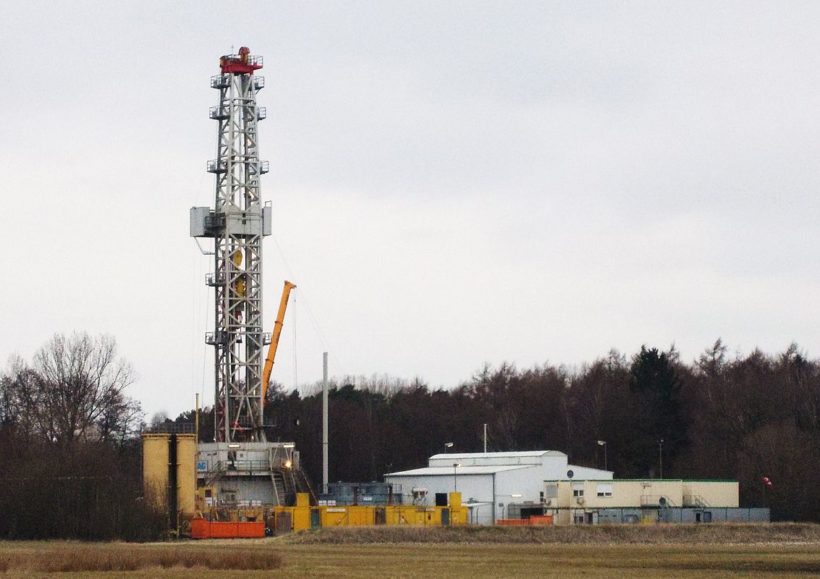 By MIRIAM ACZEL
By MIRIAM ACZEL
A new study conducted by researchers at Duke University shows a dramatic increase in the amount of water used in hydraulic fracturing, or ‘fracking,’ to extract shale oil and gas in all of the main production areas in the United States. Published mid-August in Science Advances, the study compared the quantities of water used in major shale production areas from 2011 to 2016 and found that the total water quantities had grown dramatically by 770% over the six-year period.
Unconventional Resources
Shale oil and gas resources are hydrocarbons trapped in the porous crevices of shale rock, and methods of extracting shale resources are referred to as ‘unconventional’ because the mineral deposits must first be liberated from the pumice-like crevices in the shale rock before they can be harvested. This is in contrast to conventional oil and gas methods, where the rock does not need to be fractured first to release the hydrocarbon deposits. Hydraulic fracturing uses large quantities of water, mixed with chemicals such as acids, lubricants and friction-reducers, and a proppant such as sand, to break open crevices in the shale rock. The study’s authors explain that on local scales, the amount of water used to frack wells can spark conflicts over water availability, particularly in areas where water supply is already stressed.
In addition to a spike in the amount of water used per frack, the researchers found that the amount of wastewater, or produced water, generated within the first year of the well’s production had risen by as much as 1,440% in Texas’ Eagle Ford basin. Alongside the increased potential for depletion of water resources due to the technology’s rising water footprint, increased wastewater also poses environmental threats. Once the shale rock is fractured, the pressure is released, and the water flows back to the surface. This wastewater brings with it salty brines from deep underground and can also carry naturally-occurring radioactive materials and toxic elements, thus posing risks of contamination from spills and inappropriate management and treatment of the produced water. Moreover, wastewater is often disposed by injecting it deep underground, which can generate induced seismic activity as well as lead to contamination.
So, what’s behind this rapid increase of water used in hydraulic fracturing that the researchers observed?
Well drillers have both increased the amount of water, chemicals, and sand pumped underground to release greater amounts of trapped shale resources and have extended the distances drilled horizontally through the rock, in order to unlock even more hydrocarbons.
The Duke researchers gathered 6 years of data on freshwater usage, produced water amounts, and oil and gas production from a variety of credible sources for over 12,000 wells in all major unconventional hydrocarbon production sites in the United States. The data was then used to model the future water use as well as the amounts of wastewater generated in the first year, under two different scenarios. The models demonstrated that with current fossil fuel price increases and production levels rising to the levels seen several years ago, total water use, and wastewater produced could increase by up by 20 times in unconventional oil production regions and nearly 50 times in unconventional gas production areas.
Fracking remains a controversial technology, due to concern about the massive water volumes used. This study presents, for the first time, “systematic temporal data on water use, unconventional shale gas and tight oil production rates,” as well as produced water volumes from the main shale-production regions in the USA.
Previous studies of the water footprint of fracking have suggested that the technology doesn’t “use significantly more water for exploration and production than other energy sources” in addition to the findings that fracking water use comprises a minimal proportion of total industrial water use in the United States. Importantly, however, this novel study explains that previous studies were based on data from aggregated water footprints figures during the earlier years, from 2011–2014, of fracking, and new data has shown a dramatic increase in the water footprint in more recent years.
Need for Better Recycling Technologies
The study’s findings underscore the importance of developing ways to recycle water to reduce the depletion of freshwater sources. Furthermore, the spike in amounts of water used as well as the volume of wastewater has significant ramifications for the argued sustainability of unconventional fossil fuels, as the environmental impacts are greater than previously thought, and rising steadily. This crucial study sheds light on the significant water footprint of unconventional fossil fuels and will hopefully lead to reassessments of industrial water budgets and a reevaluation of the role of fossil fuels in the transition to sustainable energy.
The US’s relatively long experience with fracking provides an opportunity to examine how the water intensity of fracking has changed through time. Moreover, the lessons and analogies from the US’s experience can help improve regulation and planning of fracking as other countries, such as China and the United Kingdom, are seeking to develop their own resources.
Editor’s note: this article originally appeared on WCEE‘s journal, The Current: https://www.wcee.org/page/05_2018Q4
Miriam Aczel is a President’s Scholar PhD Candidate at Imperial College London’s Centre for Environmental Policy. Her research focus is on international energy science and policy, with a focus on mitigation of environmental and health impacts of shale gas. She is also co-founder and co-director of the Amir D. Aczel Foundation for Research and Education in Science and Mathematics, a nonprofit working in Cambodia.
Miriam is Director of Communications and blog editor for Leaders in Energy.



Leave a Reply